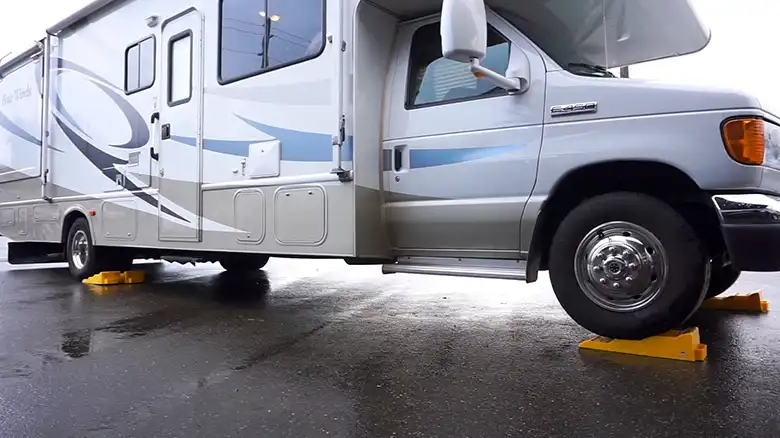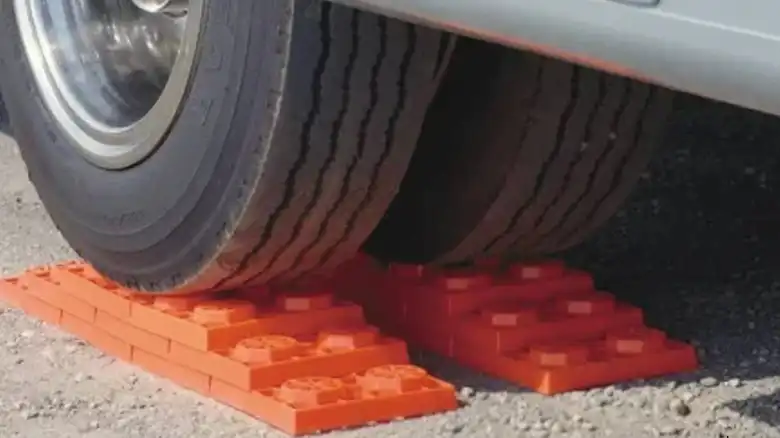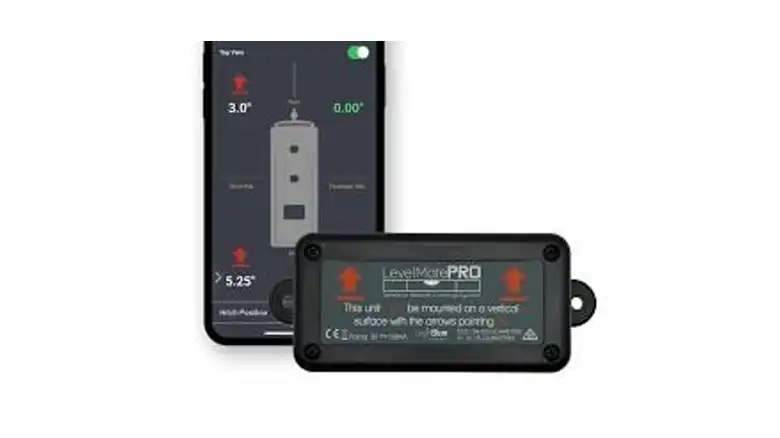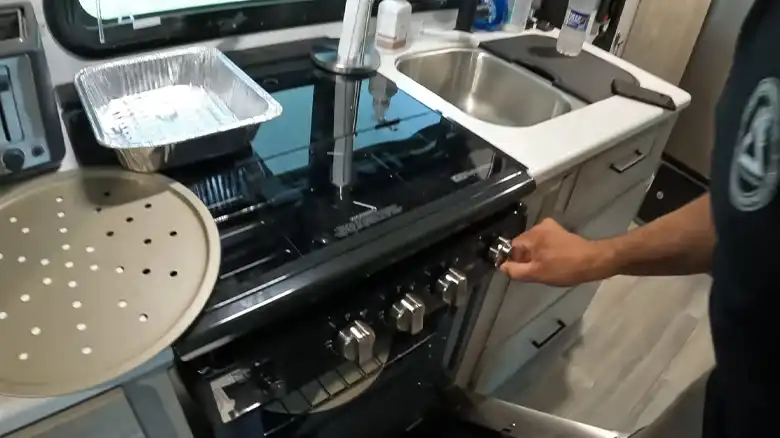As an avid RV enthusiast who enjoys traveling across the country with my Class C motorhome, getting the right leveling system is extremely important for my comfort. However, I struggled to figure out the best option from the dizzying range of manual, electric, and hydraulic leveling systems in the market catering to RVs of all sizes and budgets.
Being a solo traveler, ease of operation is my top criterion so that I can set up quickly at campsites. I also prefer to boondock off-grid frequently, so my system needs to work independently without requiring shore power. At the same time, cost is a bit of a constraint for me. With these parameters in mind, I did intensive research on types of jacks, lift capacities, power needs, and more to determine what suits my motorhome.
This article will take you through everything I learned in my RV leveling system buying journey. My goal is to help fellow RVers pick the perfect system matching their Class C RV setup, camping lifestyle, and budget. So let’s get started!

Types of Leveling Systems for Class C Motorhomes
There are three main types of leveling systems available for Class C motorhomes – manual, semi-automatic, and automatic. Let’s look at the key features and pros and cons of each to help determine the most suitable one for your RV.
Manual Leveling Systems
Manual leveling systems, as the name suggests, require manual effort to operate. Here are the key things to know:
- The operation involves placing leveling blocks under the tires to lift and stabilize the RV when parked on uneven terrain. This is a DIY task.
- There are different types of leveling blocks such as Lynx Levelers, Camco Leveling Blocks, and BAL Deluxe Levelers that provide the required lift and prevent sinking.

BAL Deluxe Levelers

Lynx Levelers
Pros: Simple, lightweight, portable, inexpensive ($50-$150 range), and easy to store.
Cons: Time-consuming to place/retrieve blocks each time, physical effort needed, not as accurate in getting RV perfectly level.
So if you camp just occasionally and want basic functional leveling without spending much, manual systems are reasonable options. However, they may not be so convenient for frequent RVers.
Semi-Automatic Leveling Systems: A Balanced Approach
Semi-automatic (also called automatic detachable systems) strike a balance between manual and fully automatic systems. Here’s an overview:
- They have permanently mounted jacks that are operated through a manual hand crank or drill drive. So no need to place separate blocks each time.
- Operation is faster than the manual method but still requires some physical effort and time.
- Available in 2-point and 4-point systems. 2-point systems level just from side-to-side while 4-point systems also stabilize front-to-back motion.
Pros: Better convenience than manual ones, faster to set up and use, affordable ($250-$800 range).
Cons: Still involves some manual work, and fewer automatic features compared to fully automatic systems.
Overall, semi-automatic systems offer reasonably good functionality for money. They can be great options for RVers who camp frequently but don’t want to spend too much.
Fully Automatic Leveling Systems for Ultimate Convenience
Fully automatic leveling systems make leveling a breeze with minimal effort. Here are the key aspects:
- Have hydraulic/electric motors that operate everything at the press of a button – jacks automatically extend to lift and level RV precisely.
- Available in 4-point, 6-point, and 8-point configurations for maximum control and stability by leveling multiple axles.
- Can be controlled wirelessly via a remote/smartphone/app allowing one-person operation.
- Advanced ones auto-retract jacks and provide diagnostics on the phone when parked.

Pros: Total convenience, super fast, levels RV perfectly even on very uneven sites, minimal physical effort.
Cons: Expensive ($2000+ range), requires electricity (battery/generator).
Fully automatic systems are the ultimate luxury for RVers who love maximum convenience and can spend more. The high price tag pays for their superior automatic features, precision, and ease of use.
Key Factors to Consider When Choosing a Leveling System
Here are key factors to weigh when selecting an appropriate leveling system:
Types of Jacks
Manual jacks: Require manual cranking effort each time and have weight load capacities typically up to 15,000 lbs.
Electric jacks: Operate via a built-in electric motor by a control switch/remote. Higher weight capacities of 20,000 lbs. or more. Need battery or shoreline power.
Hydraulic jacks: Use fluid power to activate jacks automatically. Have high lift capacity – 25,000 lbs. or more. Require generator/battery/shore power.
Leveling Capability
2 vs 4 point leveling: 2-point systems level just side-to-side while 4 point also handles leveling front-to-back effectively.
Independent vs proportional control: Proportional allows jacks to extend/retract simultaneously while independent gives more precision by controlling each jack.
Jack Footprint Size
Smaller jack pads sit within the RV frame and don’t support much load capacity.
Larger pads protrude outside the frame but safely handle bigger RV weight.
Ease of Operation
For manual jacking, choose foldable screw-type jacks requiring fewer turns or consider drill attachments to make cranking easier.
In electric/hydraulic jacks, look for wireless remotes, one-touch auto-leveling, etc.
Additional Features
Automatic safety cut-off when the RV is adequately leveled prevents overworking the jacks.
Load balancing features distribute the RV’s weight evenly across multiple jacks/axles.
Inbuilt diagnostics indicate problems allowing timely repair.
Brand Reputation & Reviews
Choose established brands manufacturing durable systems tested to handle the rigors of RV travel. Check user reviews about ease of installation, performance, reliability, etc. to determine satisfactory brands.
By evaluating these aspects, you can determine the leveling system that not only fits your Class C motorhome well but also matches convenience and budget needs.
Use LevelMate Pro to Level Your RV Properly
The LevelMate Pro is a wireless RV leveling system that uses sensors and an app to help you quickly and easily level your RV. It consists of four sensors that you place on the ground around your RV and a Bluetooth receiver that connects to your smartphone or tablet.

Once the sensors are in place, you open the LevelMate Pro app and it will show you how much each side of your RV is out of level. The app will also give you step-by-step instructions on how to use your RV’s leveling jacks to get your RV perfectly level.
Here are some of the benefits of using the LevelMate Pro:
It’s easy to use: The LevelMate Pro is very easy to set up and use, even if you’ve never leveled an RV before.
It’s accurate: The LevelMate Pro’s sensors are very accurate, and the app will guide you to within a tenth of a degree of level.
It’s fast: You can level your RV in a matter of minutes using the LevelMate Pro.
It saves you time and effort: No more guessing and checking with a bubble level. The LevelMate Pro takes the guesswork out of leveling your RV.
It can help you avoid damage: An unlevel RV can put stress on your RV’s frame and appliances. The LevelMate Pro can help you avoid this damage by ensuring that your RV is always level.
Overall, the LevelMate Pro is a great tool for anyone who wants to make leveling their RV easier and faster. It’s also a great way to help protect your RV from damage.
Conclusion
I hope this detailed guide covered all the key information to determine the most appropriate leveling system for your beloved Class C RV – whether basic functionality on a budget or maximum automatic convenience. Spending time to assess your frequency and style of camping, budget, and required features, and doing product research will lead you to a well-informed decision that adds greater stability, comfort, and ease to enjoy memorable trips for years ahead!
Please leave a comment below if you still have any questions regarding picking the ideal RV leveling system. Wishing you countless wonderful on-the-road adventures!


